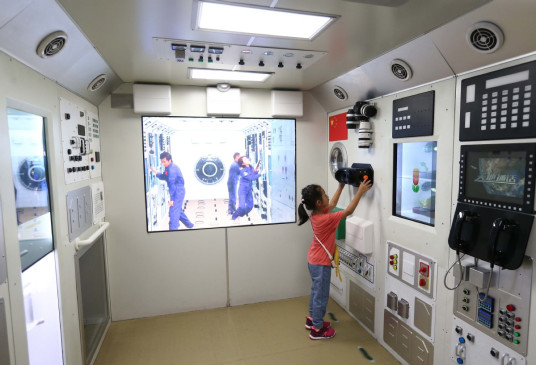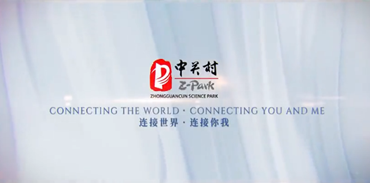Beijing museum exhibition celebrates science
 |
|
A child plays in a simulated space lab named Tiangong, a China-developed space station, at the China Science and Technology Museum in Beijing on Thursday. ZOU HONG/CHINA DAILY |
At the China Science and Technology Museum in Beijing on Thursday, children and parents made long lines waiting to experience driving a high-speed train or steering a jet fighter into the sky from China's first domestically-built aircraft carrier, the Type 001A, through virtual reality.
These experiences were part of an interactive exhibition dedicated to popularizing science to members of the public and has gripped the curiosity of thousands of people every day since its debut last Saturday.
From the world's largest crane vessel-Zhenhua-30-to the Queqiao relay satellite, from a manned submersible to medical robots, the exhibition handpicked some major scientific and technological achievements in the aerospace, ocean, nuclear energy, manufacturing, information and health industries since the founding of the People's Republic of China 70 years ago.
The showing was one of 24,000 activities held across the country from Sept 14 to 20 to mark National Science Day, an initiative that has aimed to improve public scientific literacy since 2004. A record high 320 million people were estimated to have participated, and this year's events are occurring under the theme of the 70th anniversary of the PRC's founding.
At the museum, a 4-year-old boy surnamed Liu was waiting anxiously for a turn in the simulated high-speed train control cabin. The experience was open in different time shifts, and the next open time was still 20 minutes away. But Liu refused to move to see other parts of the exhibition first, because he wanted to be the first when the time arrived.
"I love driving. I've seen it on TV," he said, adding that he had taken a high-speed train before and really wanted to know what it felt like to maneuver one.
His mother, surnamed Zhao, said if she hadn't taken her son to this exhibition, she wouldn't have known her boy had such a passion for driving trains.
"It's also good for us to know our children's interests," she added.
China has seen a rise in public scientific literacy in recent years, as well as in the budget to bring more science to the people. Chen Xi, a member of the Political Bureau of the Communist Party of China's Central Committee, stressed during a visit to the museum on Tuesday the necessity to push public scientific literacy to a higher level.
He said President Xi Jinping has said that science popularization and science innovation are equally important, and it is vital to mobilize more science workers and coordinate other society sectors to promote scientific knowledge, thoughts, methods and spirits.
Zhang Lei, an astronomy communicator, was attracted by the model showing how the Queqiao relay satellite bridges communication between the Earth and the dark side of the moon. He said he loved the interactions and dynamic presentations of the exhibition and hoped to find some inspiration for his own work.
"People now have a growing thirst for science and are willing to learn more," he said. "I believe it is an inseparable part of the scientific research. Only when we do well in popularizing science can we foster a better generation to push our research capacity to grow stronger and stronger."

